This is the final episode of the 6 part series on the orchid show I attended in Wichita a couple of weeks ago. If you haven't already, read about the
exhibits,
slippers and Vandas,
Dendrobiums and Encyclias, and
uncommon orchids I saw there. This last post will just feature any pictures that I have left that I wanted to share. There's not a real unifying theme among them.
First, I'll show off the two plants I purchased at the show that I haven't already shown you. I purchased a
Holcoglossum wangii from Oak Hill Gardens. I have been seeing this genus for a while and knew that Oak Hill had a couple species for sale as mounted plants, so this was on my want list before I went to the show. We picked out a nice, full plant to add to my
terete leaved orchid collection.
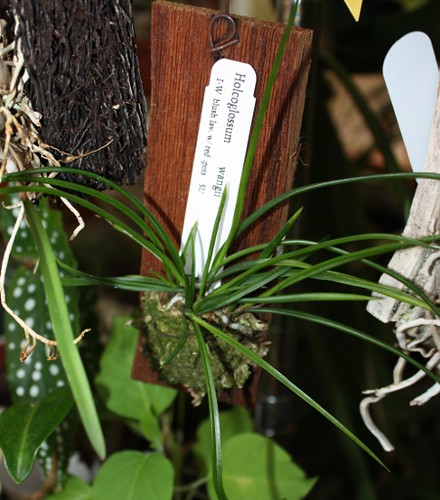 |
| Holcoglossum wangii hanging in my greenhouse |
I'm sad to report that Oak Hill Gardens, one of my favorite orchid vendors, is closing their doors soon. They are selling their orchids to another grower and selling their property to a non-orchid nursery company or something like that. I have purchased more plants from Oak Hill than any other grower and I wish they were still going to be in business. They have reasonable prices and grow a lot of species orchids. They will be missed.
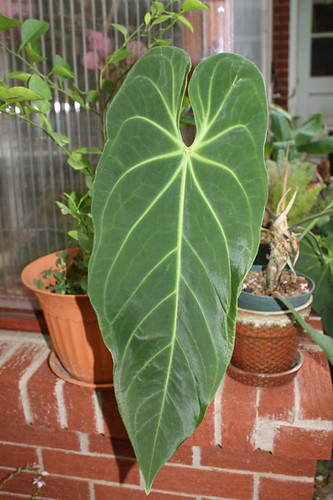 |
| Anthurium marmoratum back at home |
The other plant that I purchased and haven't yet shown off is not an orchid, but an aroid. It is
Anthurium marmoratum and is a really nice plant (above). I have only seen this plant for sale on occasion on eBay and it is always much more than I paid. I purchased this plant from Prairie Orchids. They also had some really nice
velvet leaf Anthuriums in their exhibit (pictured below).
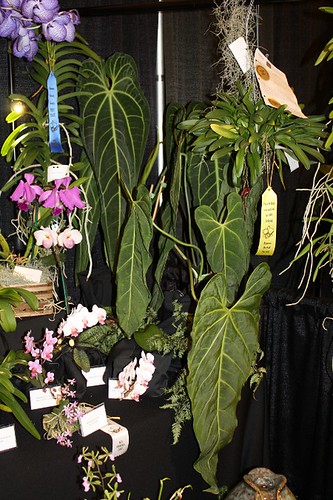 |
| A couple of Anthurium in the Prairie Orchids exhibit |
The largest genus in the orchid family is
Bulbophyllum. I am not particularly drawn to this genus, but there are a couple of species that I like. Below is a
Bulbophyllum with rather large flowers (for the genus).
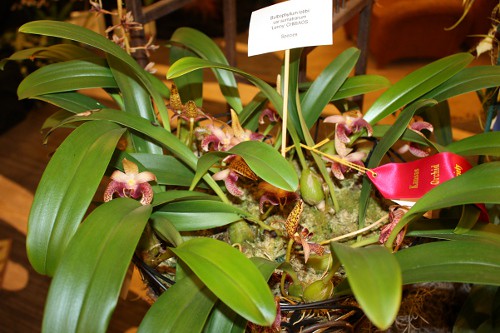 |
| Bulbophyllum lobbii var. sumatranum 'Lenny' |
The picture below is fairly representative, but there is just no comparison to seeing this plant in person. This jewel orchid,
Macodes petola, looks like lightning is running through the leaves. It is really something to see, and this particular plant was very healthy and larger than any I had seen before.
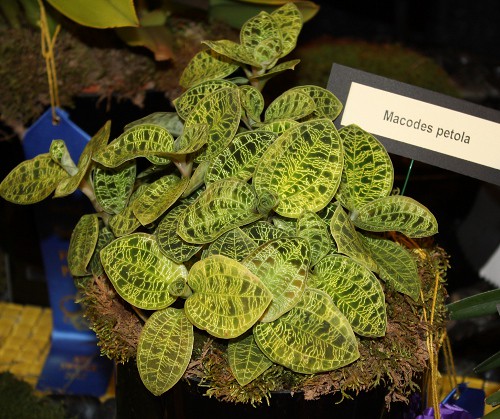 |
| Beautiful jewel orchid, Macodes petola |
There are people who are absolutely fanatical about
Neofinetias. It is a tiny genus of just three known species, and yet there are hundreds of cultivars and intergeneric hybrids, including the genera
Darwinia and
Ascocenda. The most common species,
Neofinetia falcata, is known as the "Japanese Wind Orchid," and these plants are displayed in artistic displays and beautiful Asian pots like bonsai plants through Korea, China and especially in Japan. The flower of the pure species
Neofinetia falcata is white, but cultivars have light highlights of pink, purple or orange. Hybrids can result in muted solid colors, like the plant pictured below.
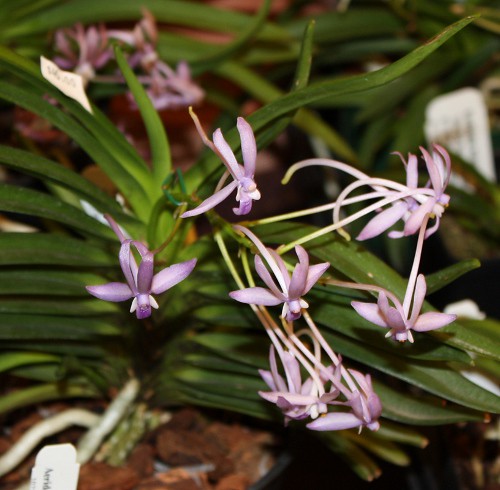 |
| Neofinetia hybrid for sale at Michel Orchids table |
I have started growing several
Cymbidium recently, primarily because they were given to me. I would like to be able to grow these well, but the culture is different enough from my other orchids that I don't know if I will succeed. All of my
Cymbidiums produce their blooms on upright stalks. Other
Cymbidiums have pendulous bloom spikes that hang down from the plant, making these plants best suited to baskets or some other set up where the blooms will not just be laying on the ground. There was a nice pendulous
Cymbidium on display in Wichita (below).
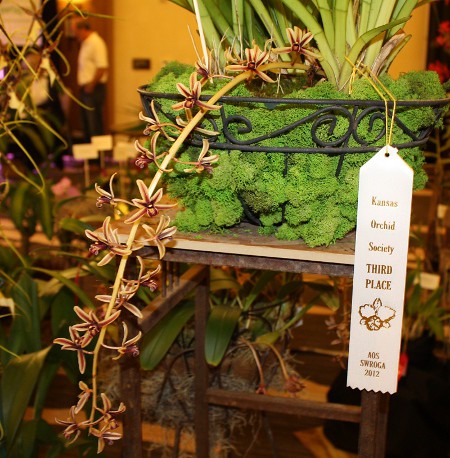 |
| Pendulous Cymbidium finlaysonianum 'Zia's Ray' |
I hope you enjoyed my orchid show pictures. Stay tuned for some photos from the orchid show I attended in Oklahoma City a couple of weeks later!







No comments:
Post a Comment